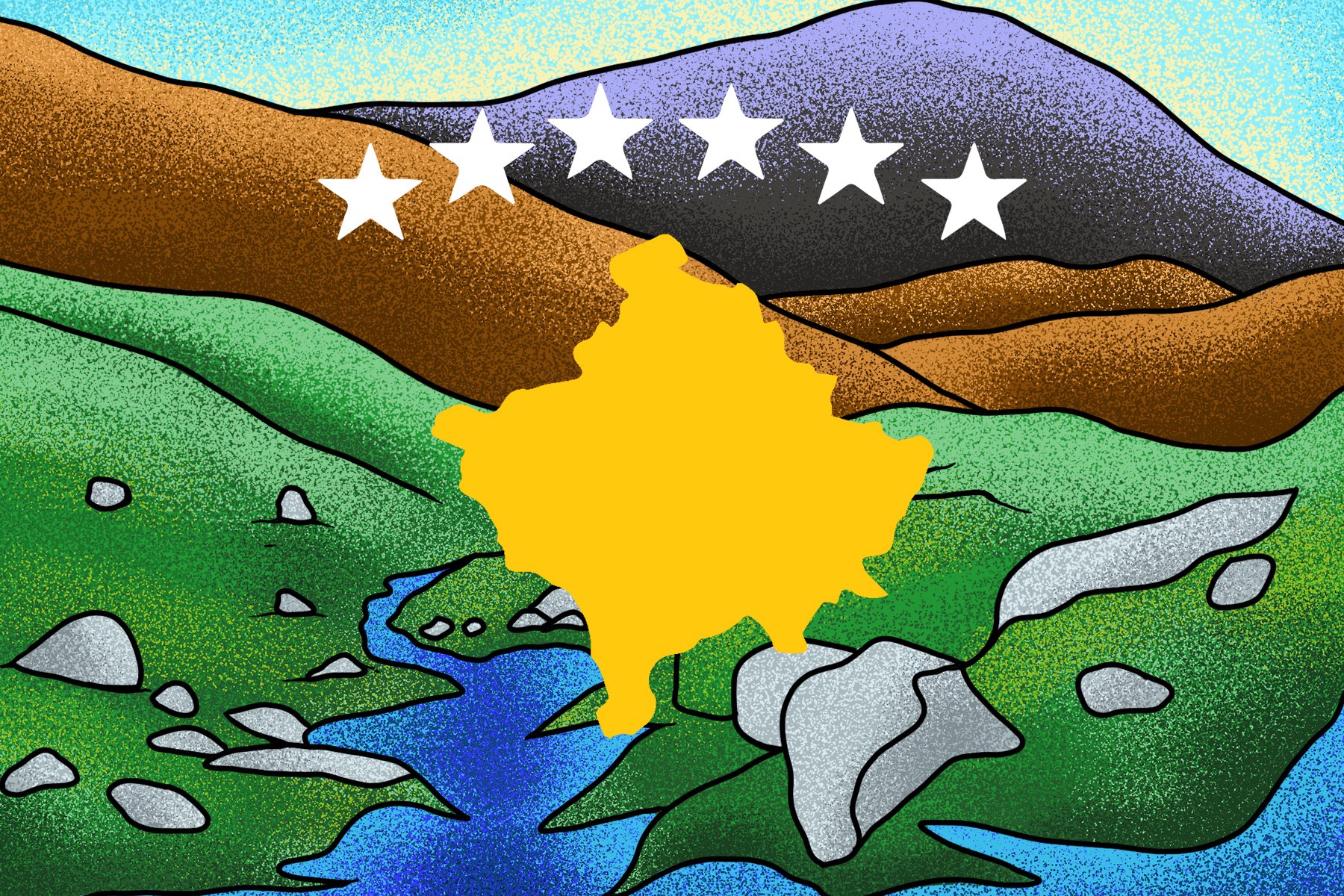When many Americans think of the ideal European vacation, Southeastern Europe is oftentimes left off the list of potential stops. To many people, the nations in this geographic region are unknown; they are unfamiliar with the attractions of countries like North Macedonia or Montenegro.
However, there is one nation in particular that gets shafted in your average trans-Atlantic journey: the Republic of Kosovo.
Kosovo is the newest country in Europe and one of the newer nations on the globe. Officially gaining independence in 2008, it has become one of the rising destinations in the European Union. The people, culture and landmarks featured within its 4,203 square miles are some of the richest and most inspiring you’ll find within Europe.
The best part of Kosovo? It has something for everyone. Nightlife chasers, history buffs and nature enthusiasts can all find a home in the mountains, plains and cities of the country. No matter what you want out of your European pilgrimage, Kosovo can deliver.
Welcome To the Big City
Many people’s first stop in Kosovo is Pristina — the capital of the fledgling country. It’s the only large-scale city in Kosovo, with about 200,000 people living within its proper boundaries.
Pristina, like much of Kosovo, is a mesh of the country’s long and diverse history. Tall, grandeur mosques stand next to intimately adorned Catholic monasteries. Communist-era, brutalist architecture stands in stark contrast to the more modern, dynamic buildings from recent years. To put it simply, the visual look of Pristina is the product of nearly a thousand years of different cultures, governments and people who have stood within it.
Pristina is the place for those who want to experience the ethnology of Kosovo and its aforementioned colorful past. The city houses a number of the country’s artistic institutions. The national museum, art gallery and library are just a few of the places one might look to catch a glimpse of the artifacts and proper art that represent the Kosovar and Albanian culture.
Cafes are common in Kosovo — specifically within Pristina. Kosovars, foreigners and tourists alike flock to the more than 100 coffee shops in the capital alone, all in the name of drinking macchiatos and smoking cigarettes with friends or strangers. BBC’s Deborah Huso noted the importance of Kosovo’s cafes when she visited Pristina in 2019.
“Like Pristina itself, its cafes reflect a blend of Balkan, European and Middle Eastern influences,” she wrote. “What makes these cafes unique is what they mean to the people who call this tiny landlocked place home… After all, it was in Kosovo’s cafes where the initial planning of its independence movement reportedly began.”
When the sun goes down, though, the people of Pristina make their way from the cafes to the various bars and clubs that make up the city’s nightlife. Techno is the major force in the underground establishments that you may stumble across in the wee hours of the night. Much like the cafes, techno music and the nightlife scene in general are a reflection of the spirit of the Kosovo people.
The director of Kosovo film festival DokuFest, Nita Dela, explained this in an interview with Conde Nast. “The eruption of electronic music just after the war symbolizes this post-war euphoria in Kosovo,” he said. “So many people living abroad came back with music. There were a lot of parties, and it symbolized freedom for the country.”
In the Rolling Hills of Sur
The hustle of the big city is not for everyone, and luckily, Kosovo also caters to those who favor a more naturalistic approach to their vacations.
Despite being a relatively tiny country, Kosovo hosts a large variety of natural attractions. Looking for rolling mountains and highland forests? Consider the Šar Mountains in the southeastern region. Feel like going cave diving? The marble caves just outside the village of Gadime e Ulët may be for you. Want to search for waterfalls hidden in the countryside? Perhaps the White Drin waterfall in western Kosovo is what you’re looking for.
However, the main draw of Kosovo’s natural beauty is its mountains — and the hiking trails that inhabit them. The Via Dinarcia trail is perhaps the most famous, running within the so-called Accursed Mountains in the western-most area of the country. Alpine lakes, forest fauna and snowcapped peaks await you along this path, and the scenery is known to give a new perspective to this often forgotten region of Europe.
The ultimate goal of any hiker trekking across Kosovo, though, is Gjeravica — the highest peak in the country. With an elevation of 8,700 feet, this mountain towers over much of Kosovo, and for many Kosovars, it is a symbol of the country’s beauty.
Journalist Naomi Dunbar discussed the view from the top in an article for Wired for Adventure. “The views from the summit are breathtaking, and the exquisite sight of the Balakans that surrounds you is truly awe-inspiring,” she wrote. “You’re not likely to forget scenery as good as this.”
Aside from the stunning beauty of its landscapes, what sets Kosovo’s natural areas apart from the rest of Europe is how unknown it is. Unlike the popular destinations in the western and central parts of the continent, Kosovo (and the Balkans as a whole) is relatively untapped from tourism. This allows for a more isolated and serene experience than those found in places like Santorini and Verdon.
“What’s so unique about this area, is the fact that it’s unspoiled due to it being an uncommonly known destination for travellers,” Dunbar explained. “Therefore, you’ll often find you have the views of jagged peaks and mind-blowing scenery all to yourself.”
The Cultured Among Us
While the cities and countryside of Kosovo may be what keep you busy, the tangled history and unique culture of this young nation is what ties it all together.
The Bulgarians, Byzantines, Serbians, Albanians, Ottomans and Yugoslavians have all laid claim to this pocket of land at some point in the last 1,000 years. The country is a unique blend of all the people, empires and nations that have lived within it. The starkest symbols of this sect of Kosovo’s history are the various fortresses littered throughout its rolling hills.
Prizren Fortress is the most well known — a complex compound built in the 6th century and used by everyone from the Romans to the Ottomans. Vojinovic Tower, Zvecan Fortress and Novo Brdo also share this rich history. They are a must see for anyone interested in early to medieval history.
The diverse group of historical jurisdictions make way for a culture that is primarily Albanian, but infused with Ottoman and Serbian aspects. As such, the food, traditions and general way of life in Kosovo are all products of this trait.
The city of Prizren (outside of the fortress of the same name) will most likely be your first stop if you want to chase such activities. The Sinana Pashe Mosque and the north bank shops are a must if you want to get a feel for Kosovar culture.
The cuisine, much like everything else in Kosovo, is a mix of various traditions. The dishes of the Balkan Peninsula, namely Cevapi and Flija, obviously make up a large part of the food served in the country. Turkish dishes have also become a staple of the Kosovar menu, including Burek, Sarma and Baklava. These dishes oftentimes heavily incorporate vegetables such as roasted peppers and tomatoes, as well minced or roasted meats like beef and pork. Needless to say, the food has become a huge draw for tourists visiting the country in recent years.
Whether you’re looking to relive history, take in the heritage sites or sit down for a delicious meal, Kosovo delivers on all fronts.
So You Want To Go to Kosovo
Luckily, getting to Kosovo in 2021 is as easy as any other European nation. The airport in Pristina will most likely be where you land, allowing for easy access to the aforementioned experiences waiting within the city.
If you want to make Kosovo a stop on your broader European adventure, it’s easy to drive or take public transportation through any of the surrounding nations. Albania, North Macedonia and Montenegro all border the landlocked country, allowing for a quick trip in the mountains of Kosovo while making your way through Southeastern Europe as a whole.
Kosovo may not be a top destination right now, but it is on track to become one. In recent years, the country has been making its way on up-and-coming lists, and the number of tourists visiting Kosovo has been steadily increasing every year.
If you want to experience the cities, landscapes and culture of Kosovo without being surrounded by your fellow foreigner, you should book your flight as soon as possible.

















